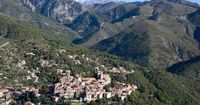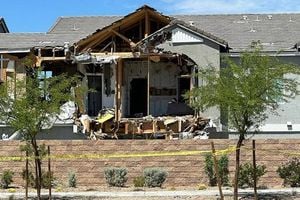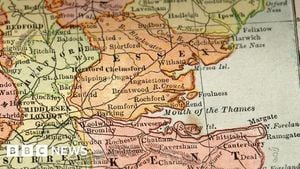A series of recent earthquakes in the Nice area has heightened concerns about seismic safety in France, as southern regions grapple with the natural forces below the earth's crust. The latest seismic activity was marked by a 2.9 magnitude tremor that shook several towns around Nice on the evening of March 20, 2025. This tremor followed just two days after another significant quake, measuring 4.1 in magnitude, which had already raised alarms among residents.
The epicenter of the March 20 incident was located north of Nice, specifically between the towns of Coaraze and Contes, roughly twenty kilometers from the coastal line. This aftershock has been recorded as part of a larger series of seismic activities affecting the Côte d'Azur area, with authorities from Sismo Azur confirming that an even smaller aftershock of 1.9 magnitude was detected shortly after the 2.9 quake.
While these events may seem alarming, Cédric Twardzik, a seismologist from GéoAzur laboratory, reassured that such aftershocks are customary following a major earthquake. “On enregistre assez régulièrement des séismes de magnitude supérieure à 3,5 dans la région PACA, environ tous les 4-5 mois,” said Twardzik. This regional pattern indicates a natural rhythm of seismic activity influenced by the tectonic dynamics between the African and Eurasian plates.
The initial earthquake on March 18 caused visible and felt tremors throughout the populous areas of Nice, prompting numerous calls to the fire services. Thankfully, no injuries or damages were reported from either of the significant quakes, but the events caught the attention of the public and the media alike. Recalling the seismic events, many residents expressed feelings of unease and surprise, recognizing how such geological disturbances trigger instinctual safety concerns.
Interestingly, the string of earthquakes affecting Nice comes shortly after a magnitude 4.4 quake rattled Naples, Italy, suggesting interconnections in seismic activity across the Mediterranean. Twardzik noted that these recent disturbances are not unrelated, as geological factors contribute to seismic happenings in the broader European region. However, he assured that the events were distinct in their origins and scale, emphatically stating, "Les séismes de Nice sont, essentiellement, liés à cette convergence des plaques.”
The Provence-Alpes-Côte d’Azur (PACA) is classified into five zones based on seismic risk, and part of it falls under the ‘medium’ risk category. While minor earthquakes occur frequently, the region experiences heightened tensions every few months, accumulating into a sense of vigilance among the residents. The presence of the Mediterranean Sea complicates the geological makeup and makes certain areas more prone to earthquakes due to fault lines that create pressure beneath the surface.
In addition to the immediate concern of aftershocks, experts warn of a potential tsunami threat. “La probabilité qu’une vague de tsunami de plus d’un mètre touche la Méditerranée dans les 30 prochaines années est proche de 100%,” Twardzik elaborated. This statistic casts a long shadow over the coastal regions of France, particularly as public awareness grows concerning the importance of preparedness in facing such eventualities.
Historically, the Mediterranean has experienced numerous seismic events, with thousands occurring each year, most unreported or unnoticed due to their minute magnitudes. The challenge lies in the unpredictable nature of earthquakes and their potential to occur in populated areas. Some of the more notable quakes in recent history include the 4 magnitude tremors detected off the coast of Monaco back in December 2024.
The interconnectivity of European seismic activities raises fascinating, if troubling, questions about the forces at play. The island of Santorini, for instance, experienced unprecedented geological upheaval just months prior, with scientists puzzled over thousands of tremors forming within a short span of time. Understanding these patterns remains crucial to inform future urban planning and community awareness programs aimed at educating populations about seismic risks.
Despite the recent events, Twardzik reassured that there’s no immediate cause for alarm. “La connaissance des zones à risque de séismes doit en tout cas conduire la population et les autorités à s’en protéger.” As communities in and around Nice look towards their future, measures must be enhanced for prevention and readiness. All too often, a lack of preparedness can exacerbate the impact when nature strikes.
As the region continues to reckon with the forces of nature, local governments are called to enhance guidelines and early warning systems, ensuring residents are well equipped to respond quickly in the face of adversity. Given the potential repercussions of unexpected earthquakes, having an informed and prepared populace is not just an advantage—it’s essential for safeguarding lives in the face of inevitable seismic challenges that lie ahead.





